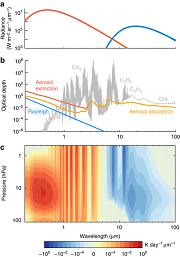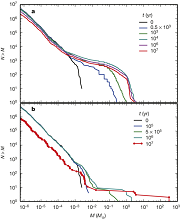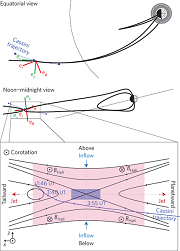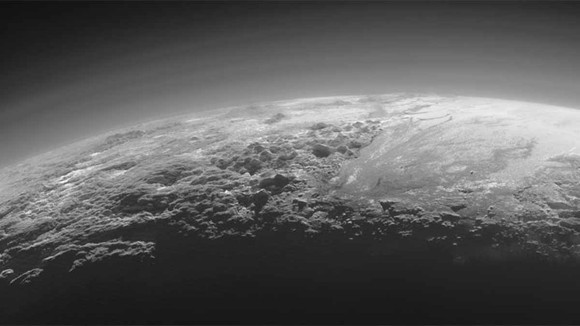The study of gas giants' behaviour has acquired an increased importance since the detection of many gaseous exoplanets.
Many important discoveries regarding gas giants have been published in Nature, from the detection of Uranus's rings to the source of Jupiter's auroras. As many gaseous planets discovered around other stars exhibit significantly different characteristics from the ones in our Solar System, science on giant planets has a huge multidisciplinary potential as a meeting point between the planetary and exoplanetary communities.
 The Cassini mission (see also here) has extensively monitored Saturn and its system since 2004. On 30 September 2017, Cassini will complete its last manoeuvre to plunge into Saturn itself for the so-called Grand Finale. This commentary by Edgington & Spilker in Nature Geoscience describes what will happen and what kind of science we expect to study using Cassini as an entry probe.
The Cassini mission (see also here) has extensively monitored Saturn and its system since 2004. On 30 September 2017, Cassini will complete its last manoeuvre to plunge into Saturn itself for the so-called Grand Finale. This commentary by Edgington & Spilker in Nature Geoscience describes what will happen and what kind of science we expect to study using Cassini as an entry probe.

An analysis of data from Voyager and Cassini demonstrates the importance of aerosols in the energy budget of Jupiter (and potentially of other gas giants), whose knowledge is essential for understanding the active physical and chemical processes within the giant planets. The paper by Zhang et al. is published in Nature Communications and, as such, it's open access.

Gas giants are believed to be formed by metre-sized 'pebbles' that aggregate to form solid cores, around which the gas subsequently concentrates. This theory, however, didn't agree with formation simulations that showed that the result was the formation of hundreds of Earth-sized bodies rather than a few gas giants. This discrepancy is solved by the study of Levison and colleagues, published in Nature and freely available for a limited time, according to which you need the pebbles to form slowly enough to obtain the desired planetary configuration.
 Magnetic reconnection is a common process in astrophysical plasmas, but there are not many direct observations of its occurrence in planetary environments. The Cassini measurements presented in this Nature Physics paper by Arridge and co-authors detect an especially long-lasting example of magnetic reconnection, showing that this kind of phenomenon can lead to significant plasma loss at Saturn.
Magnetic reconnection is a common process in astrophysical plasmas, but there are not many direct observations of its occurrence in planetary environments. The Cassini measurements presented in this Nature Physics paper by Arridge and co-authors detect an especially long-lasting example of magnetic reconnection, showing that this kind of phenomenon can lead to significant plasma loss at Saturn.

